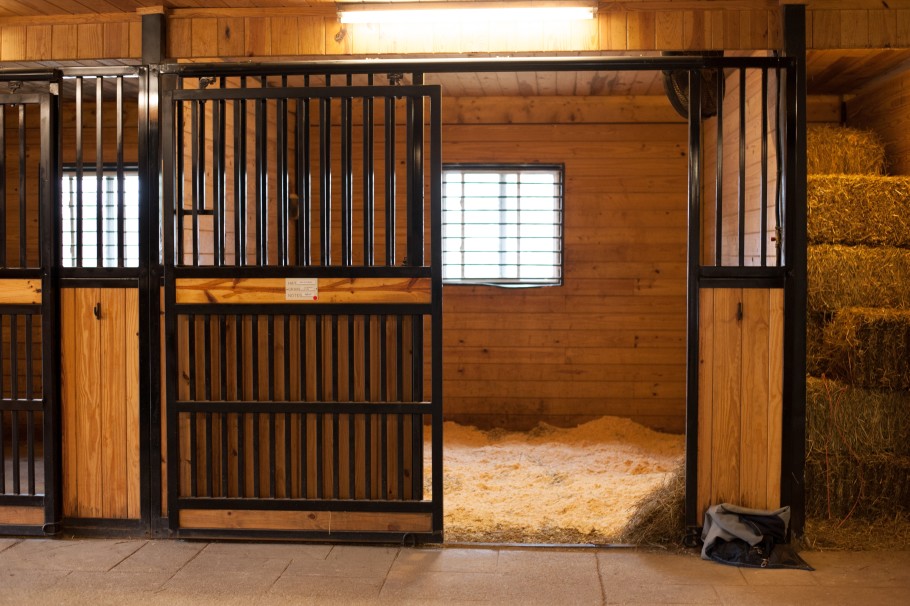Barn Dust Control: Problems & Dust-Busting Solutions
Updated August 14, 2023

Between the shavings she sleeps in, the hay she eats, and the cobwebs in the rafters, your horse’s home may be full of dust that could negatively affect her respiratory health.
That’s because “dust” isn’t just “dust.” Dust particles are also made of fungal and mold spores, mites and other insects, bacteria and their toxins.
Though “dust-free” and “barn” are rarely found in the same sentence, there are steps you can take to help keep the dust down. Read on for five easy ways to chase the barn dust bunnies away and help your horse breathe easy.
1. Wetting or Soaking Hay
Wetting or soaking your horse’s hay helps reduce dust while hydrating your horse.
When soaking hay, ensure you do not soak it for more than a few hours. A combination of moisture and heat from the weather could lead to bacteria and decomposition of the hay.
Steaming hay is a slightly safer option. A hay steamer, like the Haygain HG 2000, sterilizes the hay, killing potentially harmful elements.
2. Time Your Sweeping

While it’s common courtesy to sweep the barn aisle after grooming, it may not be the best time for your horse’s sake if she’s on the cross-ties.
Try to sweep or blow the breezeways while the horses are out of the barn. This will reduce the amount of barn dust they could inhale. If you must clean while the horses are inside, wet down the aisle first to minimize dust particles.
3. Keep the Barn Open

Keeping the barn shut tight all winter is tempting to preserve heat, but you don’t want to lock out the fresh air. To keep clean air circulating, open the barn as much as possible when the temperatures allow it.
4. Be Mindful of Shavings

Instead of opening a new bag of shavings right next to your horse, add them to her stall when she is outside.
Just like sweeping, this will reduce the amount of dust particles your horse inhales. Try to purchase low- or dust-free types of bedding whenever possible and avoid straw.
5. Remove Cobwebs
Cobwebs trap dust and are a fire hazard, so be sure to de-cobweb regularly. Wait until after the horses have been turned out to minimize their exposure to the extra dust.